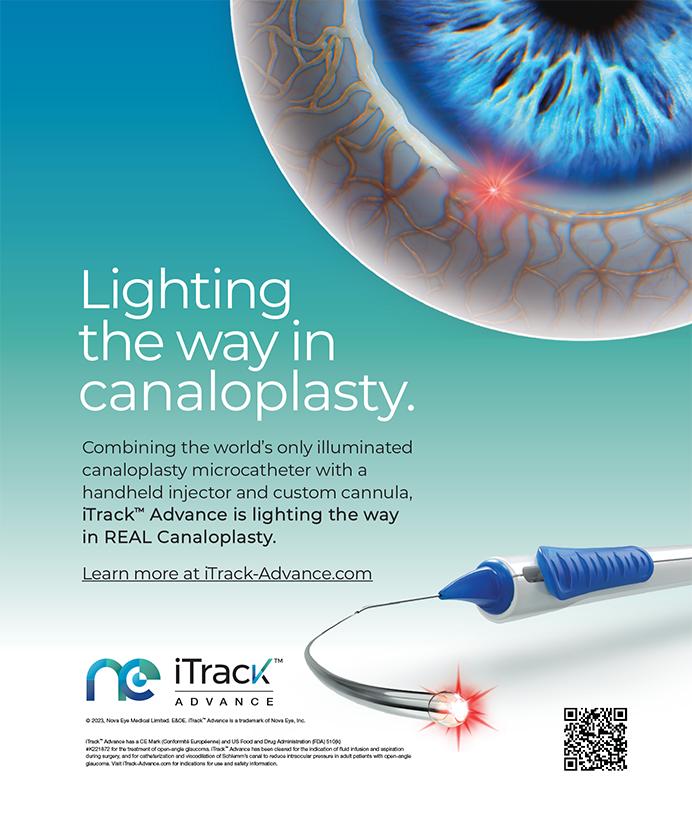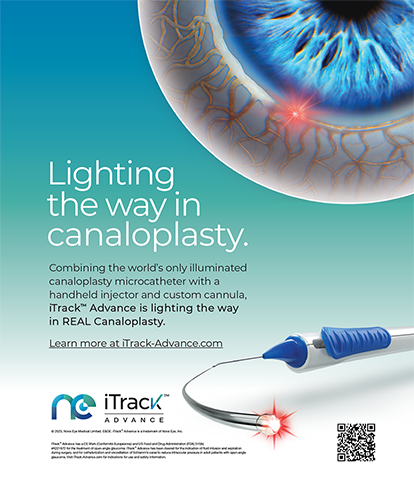
Clinical research takes promising new ophthalmic devices from the initial investigation through FDA approval. The process is typically long and involved, and it produces a vast amount of clinical data on a device’s safety and efficacy. Deciding to implement a new device in your practice requires a careful, critical evaluation of the data and their implications.
DIGESTING THE DATA
Review Subject-Related Information
The first step in deciding if a new device would be valuable to your practice is to carefully review all of the subject-related information from the clinical trial. Examining the patient inclusion criteria is especially important when making comparisons to other studies. Ideally, the enrollment and patient selection criteria will be similar to those for earlier trials, facilitating a comparison of datasets (apples to apples). In the event that the criteria are not similar, note the differences so you can take them into account when reviewing the results.
Another important factor is the size of the study; the overall number of study subjects will play an important role in your analysis. Consider if the study was large enough to provide realistic conclusions on safety and efficacy. From a safety perspective, the size of the study may affect whether a genuine view of potential adverse event rates can be ascertained.
When assessing a device’s performance or efficacy, it will be important to consider whether the number of subjects was sufficient to validate a demonstrated P value. Determine if the results were statistically significant or just noted as trending toward significance. To that end, consider the number of subjects starting and completing the study. A high discontinuation rate signals that there might have been problems relating to the study’s design, subjects’ noncompliance, or the device’s safety.
Review the Study’s Design
The second step is to look at the study’s design. Clinical trials for new devices are likely to be randomized, which can offer a greater sense of confidence in the data. For example, you might closely analyze the differences in the main outcome measure(s) in the study. For glaucoma surgical interventions, this will likely be a reduction in IOP over specific time points. Secondary measures are also of interest and may include the rotational stability of an IOL or the number of concurrent medications for glaucoma.
A final point to consider is the emerging global expansion of clinical trials. As trials expand to encompass different geographical regions, take note of the difference in ethnicities of the participants. It is in the best interest of your practice to have a thorough understanding of your patient population. Look especially closely at data that come from patients of similar demographic backgrounds, as this information will more closely parallel what you can expect to encounter on a daily basis. Ultimately, different designs and endpoints make it tricky to compare studies directly, so recognizing study differences and keeping them at the forefront of your mind will help to put meaning to the dataset.
At a Glance
• Carefully review the design, methods, and subjects included in a study.
• Consider all available data, some of which may include global studies.
• Stay up to date on ongoing postmarketing surveillance.
WHAT THE DATA MEAN FOR YOUR PRACTICE
Ideally, assessing new technologies will allow you to pick and choose the improvements and innovations that have the best chance of enhancing your patients’ outcomes such as reducing surgical complications or accelerating recovery times. New devices can improve efficiency or cost without affecting treatment outcomes. Confidence in these data assessments comes from a close review of the reported results or, in some cases, personal participation in one or more clinical studies. A tangible benefit to involvement in clinical trials is the experience it provides with a new device or technology before the FDA approves it.
For physicians involved in the trials (and their practices), both the assessment process and the transition from an existing, established methodology to new processes could be facilitated by trial participation. Alternatively, for those who are less familiar with a newly approved product, it is very reasonable to take a more conservative approach and to establish some clinical experience with it before proceeding to wider adoption. The advent of new technologies also means potentially increasing your patient population and demographics, because new therapeutic value may be added to existing surgical interventions (eg, cataract surgery in conjunction with glaucoma surgery for a reduction in IOP).
CONCLUSION
When faced with the prospect of analyzing the value of a new technology, let the data be your guide. Careful review of the methods and subjects included in the research along with a comparison of existing or historical data is key. High discontinuation rates or higher-than-normal reported adverse events in the results are red flags. Ultimately, real-world use is essential when gathering a complete picture of a product’s safety and efficacy and for deciding if a novel device is an appropriate fit for your practice. Watch for presentations at conferences about outcomes with a device and postmarketing studies to gather a complete understanding of the application of the product even after its approval. n
Section Editor Ryan Bouchard
• director of medical devices at Ora
• (978) 332-9574; rbouchard@oraclinical.com


